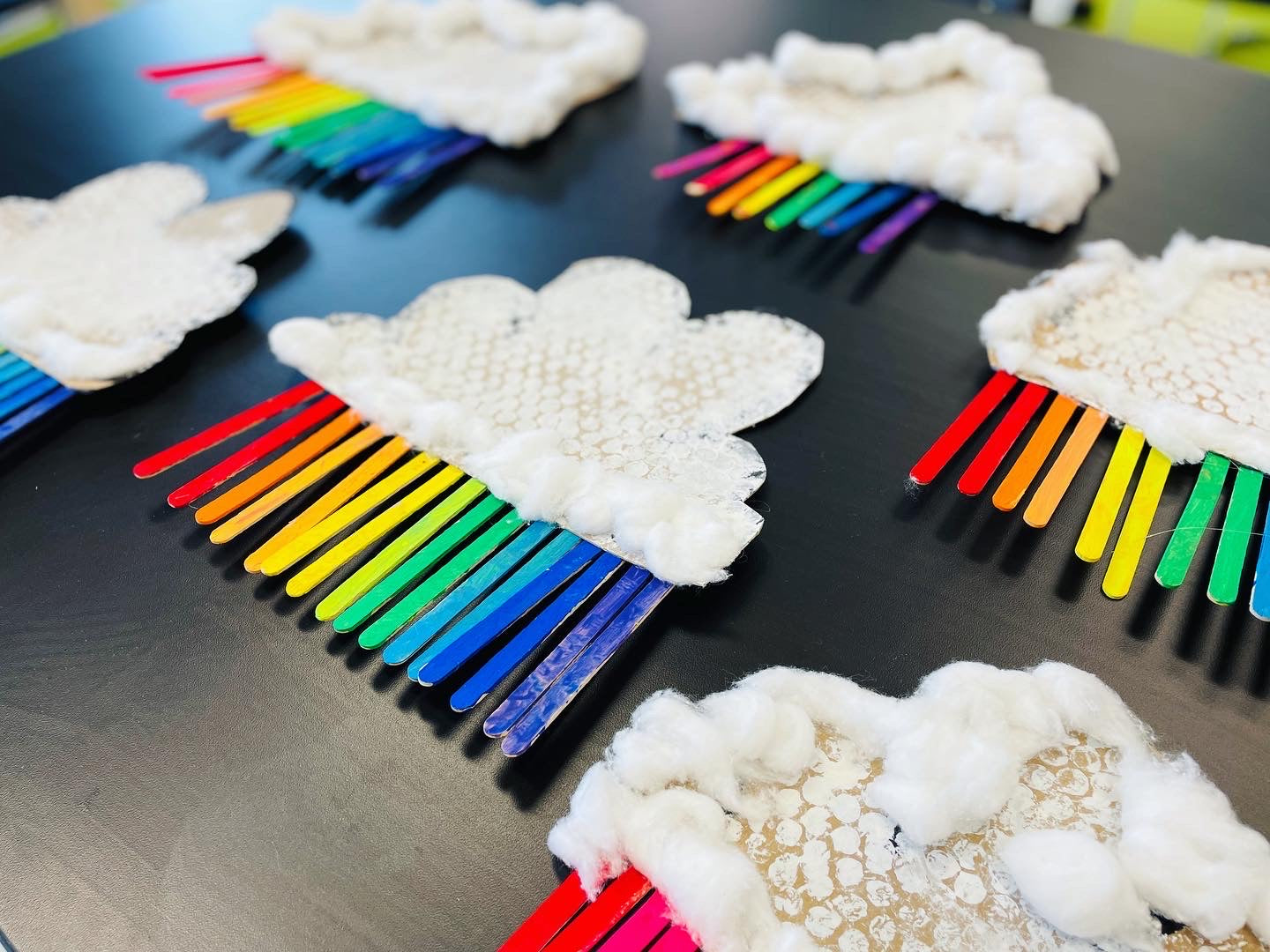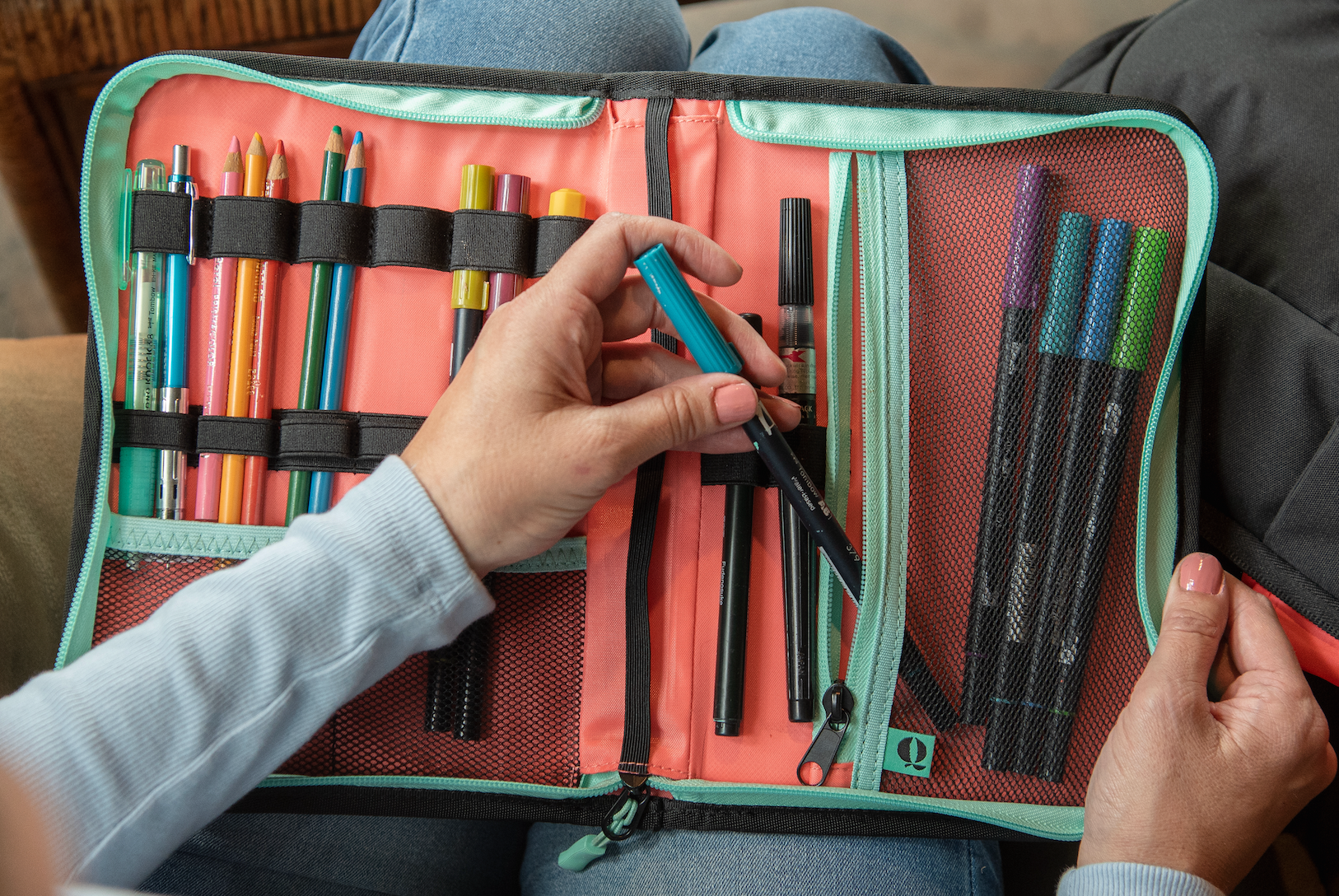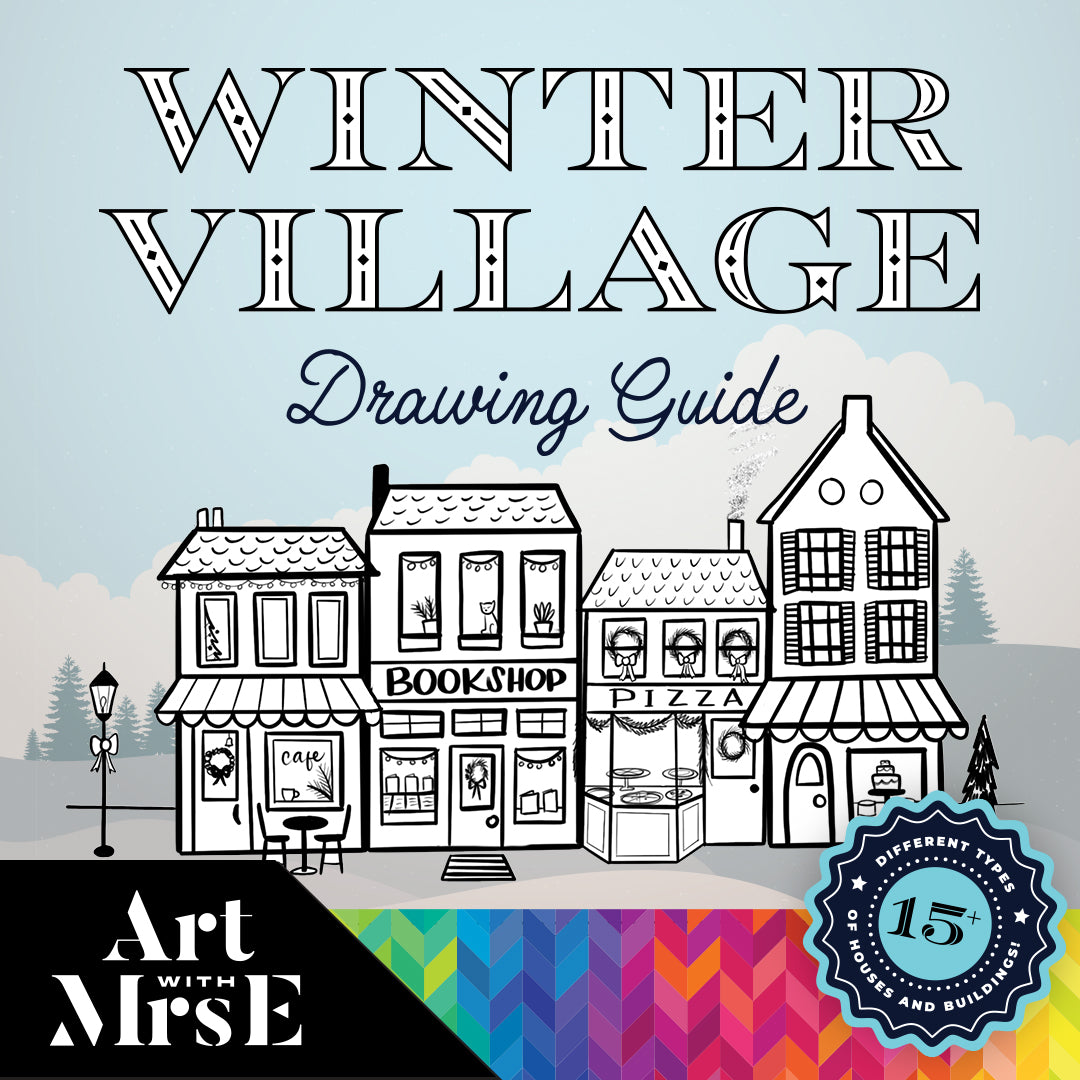

“Help! I’m a new teacher and I have limited experience teaching an adapted art class. How do you structure your class?
“My school just added a self contained art class to my schedule and I am at a loss of how to start planning for them”
“My students with special needs are mainstreamed into my Gen Ed classes and I am looking for ways to best support them while also teaching the rest of the class, do you have any advice?”
These are just some of the many questions I’ve received over the years about teaching an Adapted Art class.
I would like to start by clarifying that I do not have a degree in special education, nor art therapy (although both would be a dream to add to my credentials) but I do have 15 years of experience teaching students with varying abilities and is something I am deeply passionate about. However, if you have any questions regarding the specific needs of your students or other important questions regarding IEPs, safety, schedule, protocols, etc, I encourage you to start by talking to the Autistic Support/ Life Skills/ Learning Support teacher, or administrator. This blog is merely based on my own experience of teaching neurodivergent students in both self-contained and mainstreamed art classes.
Ok great, now that my disclaimer is out of the way, let’s chat about one of my FAVORITE classes to teach, Adapted Art! If you’ve been following me for a while on Instagram, you probably know that I am super passionate about sharing what I do with my adapted art class. First of all, if you are unsure of what “adapted or adaptive art” is, it is an art class that provides instruction to students with a variety of abilities and a broad range of communication and learning styles. Adapted art classes are typically smaller in size (depending on your school/ district or state) and have several paraprofessionals attend with the students during the duration of the art class.
In this blog I am going to provide 10 pieces of advice to help you gain confidence in running your adapted art class.
1. “Art is for EVERYONE.” - Keith Haring
This Keith Haring quote has become my unofficial tag line for advocating the importance of art for neurodivergent learners. All students deserve ACCESS to a valuable art education, not just neurotypical students. Many students with autism are visual thinkers with an intense eye for detail and can use their imagination and creativity to work through their feelings, reduce stress, improve their well-being and help express themselves to the world.
“According to Monarch Center for Autism, art provides opportunities for positive experiences that can translate into enhanced classroom performance and increased ability to gain from educational services. Art therapy can also be adapted to support academic, social, speech and language, or emotional goals and objectives.” (Bagely, 2022) The beauty about our subject is that anyone can feel successful when given the opportunity to create art, we just want to make sure that everyone has access to a quality art education program. You have the power and opportunity to make a difference in the lives of these incredible children, make the most of that opportunity!
2. Safety First
There is nothing more important in your adapted art class than the safety of the children. So before you become inspired and start creating the most amazing adapted art lessons, you must first make sure that everyone’s needs are considered with a safety plan. Some things you may need to consider in terms of safety are:
-
How many paraprofessionals/ aides will be present during my class? What is the student/ adult ratio?
- Know the specifics and details of each child's IEP (Individualized Education Plan).
-
Where will my class take place? For many years I pushed a cart into the autistic support rooms because I felt that coming into their space was safer for my students given the layout/ materials in my art room (IE, the paper cutter, overstimulation, other students' artworks being stored on counters). Have an honest conversation with yourself and the other teachers involved and develop the best plan for where class will take place.
-
Are all of the materials you plan on using non-toxic and safe? This might mean that some materials you plan on using are fine for some students but need to be kept away from others due to perhaps sensory overload or students who might put things in their mouth. Develop a list of safe supplies for your class.
-
Do you have the proper training? Do you need any additional/ specific training to work with these students? These are important questions to ask your administrator. Know where you stand with how you can support/ calm a student without physical restraint if you are untrained to do so. You can find some helpful strategies HERE.
3. Establish Clear Expectations and a Good Rapport with Your Support Staff
A good support staff is worth their weight in GOLD. That's why it's super important to have clear expectations, open and direct communication and an appreciation for their help. I know communicating expectations could feel a bit awkward, but I’m here to tell you that you can (and should) be clear with your expectations for the paraprofessionals who will be assisting your students while in your class. Just like with your students, the paras in your room are with many teachers throughout the day, and each teacher has their own set of expectations in their classroom, so it's important to communicate how things will be run in your class. Even though I have been lucky enough to have had some AMAZING paras in my room over the years, it's still important to share clear expectations each year. Something that helped me in the past with this was holding a meeting with the special education team before the school year got underway. This way everyone is on the same page as to what is expected of them when they come to art with their students. Direct Communication is always best- be kind, but also clear.
A few of my expectations for the adults joining my class are:
-
Please dress appropriately for art class. Meaning, wear clothing that you are ok with potentially getting messy. (Let’s just say over the years I have developed the nickname “Hurricane Edington” based on how messy my adapted art classes got at times, so it’s best to prepare your paras ahead of time so they won’t be caught off guard and can be prepared).
-
Please keep phones away during class unless there's an emergency.
-
Please limit side conversations. Chatting on the side can be distracting to the students, especially when directions or demonstrations are being given. Keep the students and their artistic experiences the priority.
-
Allow the students to do the work themselves, even if it doesn’t turn out like my example. Of course paras are there to help and assist students to complete certain tasks, but my class is not designed to be “one size fits all”. All children are able to have creative liberty and experience the projects in their own way and finding ways to best support them is most important.
-
Have fun and feel free to engage in the projects along with the kids when it seems appropriate! Adapted art time is art therapy for everyone! All are welcome to participate!
4. Process over Product
This is one of the most important things for me when creating lessons for my students. Sure, it’s nice when a project ends up looking beautiful- but what’s more important is what the students are gaining from the experience. So much of our students’ days are scheduled down to the minute. So when they come to art, let them have some freedom to express themselves! If they can't have some fun, freedom and flexibility in art, then when can they have it? Now, I’m not saying not to have a plan and let them do whatever they want (I’ll touch on planning in a moment) but just remember that it’s the experience of your class that is going to add the most value to your adapted students, not the “Pinterest perfect step- by- step" craft.

5. Plan Multiple Lessons and/or Create Centers.
Not everyone has their art classes for the same amount of time, so this next tip is going to depend on your schedule and time allotment. I have always had about 45 minutes to teach my adapted art class and sometimes that feels like a LONG time when you only have 5-6 students who tend to work quickly. You don’t want to be caught off guard with having an excessive amount of free time after your students finished their project in the first 8 minutes of class. Nothing good usually happens when your students have excessive free time. So to help break up the class, I either plan multiple art projects (usually around 3- 4) or I create stations in my room that students and paras can rotate through, with one of them being the main art project/ projects for the day.
Multiple Lessons: When I was pushing into my AS/ LSS classrooms I planned for “Day one” for 3 different art projects. The reason I planned for only day 1, was because if the first step to a project involved painting, we could do the painting portion of the project then move it to a safe space to dry, begin something new, and then come BACK to the next step of that first project the following week. Basically, you’re not sitting around waiting for paint to try. You can move onto a new lesson to start and then come back to each project the following class.
Stations: When my adapted class started coming to my classroom I decided to try out stations. I would create multiple sensory stations around my room and have one table where the students would rotate to me and I would have them work on their art project for the day. This worked well because it created consistency and predictability for the students (ex: they knew that at some point in art they would all get to play with cloud clay or kinetic sand at one of the stations) while also getting to create something new and exciting. A timer works really well for station rotation.
6. The Dollar Store is your BFF
Out of all of the art supplies I use on a weekly basis, I would say 85% of them come from the dollar store. The dollar store is the perfect place to stock up on bins, containers, cups, bowls, etc for tons of sensory play! I have a HUGE list of some of my favorite supplies that I use in my adapted art class available. Click here to download my ULTIMATE SUPPLY LIST for Adapted Art. Another great place to find adapted art supplies is at Discount School Supply (I have to thank Kristian over at @Friendsartlab for this recommendation!) I have linked their art supplies here. They have a ton of sensory foams, doughs and materials perfect for adapted art.

7. Create an Accessible Adapted Art Supply Area
For students who are mainstreamed into Gen. Dd classes, having a “grab and go” adapted art supply bin is a game changer. For me this is a cabinet in the front of my classroom clearly labeled, and easily accessible for students. Everything in this cabinet is safe for students and can be used for students both in self contained adapted art and for students who are mainstreamed. You will find everything from texture rollers, paint scrapers, sensory doughs, and more! To learn more about what I keep in my"Grab & Go" adapted art bin, you can check out my previous blog post here.

Be Flexible (And have a back up plan or two)
Sure it would be nice if every project we planned was executed flawlessly, but unfortunately that’s just not the realities of teaching, period. It doesn’t matter who or what you teach- teachers always have to have a back up plan (or two) in case things are thrown off track! The same thing goes for teaching adapted art! Of course make a plan for the class, but also you may want to go ahead and ask yourself questions like “What if one of the students doesn’t like this type of material, what could they use instead?” or “What if someone is having an off day and completely rejects this project? What can I pull out to use instead?” It’s always good to plan for the unexpected just in case ;)

9. Meet the Students Where They Are
In my adapted art class, there is a huge range of artistic abilities and interests. Some of my students really prefer more malleable supplies they can squeeze, pound and mold. Others might prefer to keep their hands clean and would rather color or cut. Some are sensory seeking with, while others run the opposite direction. Due to the nature of an adaptive art class, you have to keep each student in mind when you are planning your lessons for class. For example: One of the ways I like to end my art class is by spraying some shaving cream on the tables and allowing the students to have the ultimate sensory experience playing in the shaving cream. However, I had one student who tended to put many supplies in their mouth. So instead of giving them shaving cream to play with, I offered them whipped cream as an alternative- that way if they did put their hands in their mouth, they was safe.
One student I have is basically an art prodigy and creates the most breathtakingly beautiful projects completely on her own. Even though I plan an entire project for my students, often times she would just merely take the supplies that I laid out for a project and would run with them in a completely different direction... but was always fully engaged and happy. After a few classes of trying to course correct her, I finally decided to get out of her way and let her use this time how she needed it most. So I would see what direction she was taking the project and then guide her from there. My point is, have a plan but also don’t be afraid to change course and create unique experiences for each student and truly ADAPT your class to fit their needs! That’s literally why this class is called adapted art. If everyone’s work all looks the same but each student has different needs, skills, strengths then something is wrong. Don’t be afraid to give up a bit of control if it means providing each student with what they need to flourish.
Also, the more you build relationships with your students, the more you can use their interests to your benefit in class. For example, I have a student who fell in love with my wooden mannequin, calling him Pinocchio. So we decided to work Pinocchio into class as a reward for him. Using “First this, then that” incentive, I decided to let him hold and even draw/ paint on Pinocchio once his project for the day was completed. He absolutely loved working for Pinocchio and I loved to see what he would add him to him each week! 

10. Treat Every Student as if They Were Your Own Child
Every single child in your class is someone else’s child. Please remember to always treat them all with the dignity and respect that you would want your child to have. Ask yourself often, “Is this what is best for this child right now? Am I giving these children the same amount of time, energy, accessibility and love that my other students have?” Have empathy and compassion for the parents and families and ask yourself, how can I help?

Remember, that You are a Force for Good!! Adapted Art can sometimes feel like a large mountain to climb at times (with the amount of planning and preparation required) but just remember that you are a force for good and that you are doing so much to benefit so many children. You are enhancing their lives through the gift of creativity and self expression. You are using art to build relationships, bridge communication gaps, help students express their feelings and give them a productive and creative outlet. You are also modeling to the rest of your school that you value a quality program for your adapted students and that sets a great example for others. You are amazing and you are exactly what every student needs! Now get out there, embrace the fun (and mess) that adapted art class is!
If you ever have any questions regarding adapted art, don't hesitate to reach out to me via email or Instagram. You've got this!








3 comments
Hi does you do any workshops on adaptive art?
Thanks
I loved this blog! The practical tips on adapting art lessons for diverse learners are so valuable. It’s inspiring to see how confidence in teaching can grow with the right approach.
Thank you for an awesome article. I have been teaching children with autism in many different capacities for 19 years. Last September I became the very first Art Specialist for our program, finally being able to use my art degree and my many years of experience teaching neurodivergent learners. Your disclaimer sounds exactly like me!
I would love to be able to communicate with you from time to time. It’s been an exciting first year but lots of things still to learn and develop for my students.
After a rocky start and lots of foibles and funny stories along the way, everyone has embraced my Art on the cart style. My students have been amazing and have produced the most phenomenal artwork. My greatest difficulty has been instilling process over product.
Again thank you for writing exactly how I feel about adaptive art. I hope it will be ok if I share this article with my wonderful, dedicated and committed co workers.
Claudia